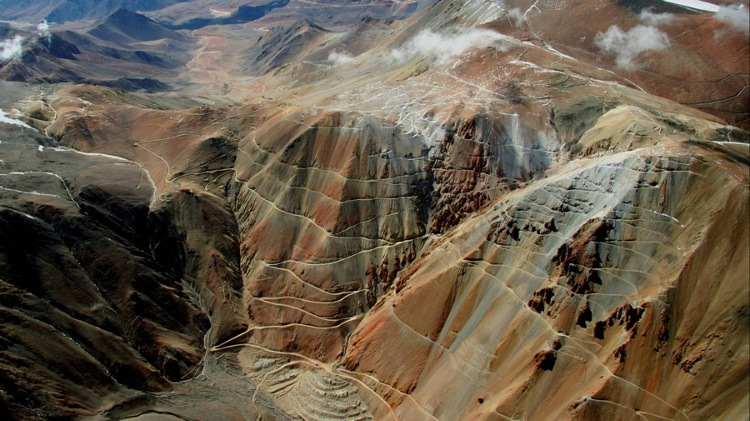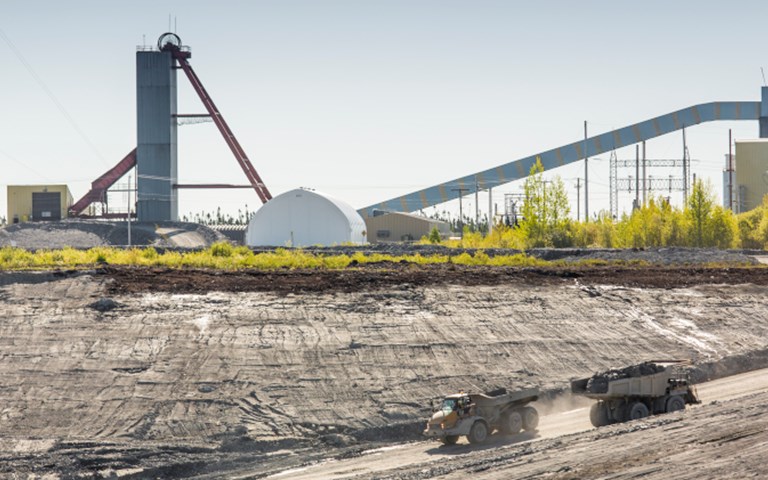Hecla has brought Casa Berardi’s production to 3,551 tonnes per day, up from 1,600 tonnes per day. Courtesy of Hecla Mining/Mathieu Dupuis
Welcome back to your weekly mining news recap. At the end of the week, we’ll catch you up on the mining news from CIM Magazine and elsewhere that you may have missed. In this week’s headlines: the Canadian Mining Hall of Fame names its latest inductees, more investment is required to meet the demands of electric car makers, and Hecla Mining makes an old mine run like new.
******
The Canadian Mining Hall of Fame has named its 2019 slate. The Hall, which recognizes the industry’s outstanding achievers, added to its ranks Kate Carmack, the long unrecognized fifth member of the “Klondike Discoverers;” Geological Survey of Canada geoscientist James M. Franklin; Aur Resources founder James W. Gill; prolific mine developer Sandy Laird; and Brian Meikle, the discoverer of three major Barrick gold mines. Carmack is the third woman in the Hall’s 30-year history to receive the honour.
Due to recent setbacks, Rio Tinto’s iron ore shipments fell in the third quarter, and the company announced first production at its Oyu Tolgoi copper-gold mine in Mongolia would be delayed, Reuters reported. The company attributes the reduction in iron shipments to a fatality at its Paraburdoo mine in Australia, where a truck driver was killed in August. Production at the mine had been paused for maintenance and safety checks. Ground conditions and a delay in completing a shaft have caused Rio Tinto to reevaluate its targets for first production at Oyu Tolgoi, which is currently undergoing a US$5.3-billion underground expansion to create one of the world’s largest copper suppliers.
At the S&P Global Battery Metals Conference in New York, Vale U.S. regional sales manager Paul Casbar said that there will have to be billions more invested in nickel and copper projects to meet the coming demand for electric vehicles, S&P Global reported. Casbar expects that more than $70 billion of investment in nickel mining and $40 billion in copper will be required before the demand is met.
Canada legalized recreational cannabis on Wednesday, so now might be a good time to revisit our June article about how legalization will affect the mining industry. In safety-sensitive industries like mining, showing up to work impaired can have serious or potentially deadly consequences. Random drug testing is generally prohibited on privacy grounds, and drug testing for cannabis is an imperfect science, so managers should learn to recognize the signs of impairment and stress to their employees the dangers of coming to work high. (In other pot news we enjoyed, a budding young entrepreneur sold her Girl Guide cookies to people in line for the Edmonton cannabis store, and HuffPost Canada has a collection of groan-worthy pot puns worth working into conversation.)
As Saudi Arabia continues to deny any involvement in the Oct. 2 disappearance of journalist Jamal Khashoggi while in the Saudi consulate in Istanbul, Glencore has announced that its chairman, Tony Hayward, will no longer attend the Future Investment Initiative conference in Saudi Arabia, Reuters reported. Several sponsors, such as Bloomberg and Japanese media company Nikkei have also pulled out following Khashoggi’s disappearance.
Hudson Resources’ White Mountain anorthosite project in Greenland is now 95 per cent complete, Mining Magazine reported. The mine’s process plants and storage buildings have been built and all the major mechanical equipment has been installed. White Mountain is the largest anorthosite deposit in the world, with the only larger deposit located on the moon. Hudson still has component installations and a 500-metre road to build, and is expecting to have the mine operational in a few weeks.
Lastly, our project profile of Hecla Mining’s Casa Berardi mine in western Quebec is now online. Since purchasing the 29-year-old mine from Aurizon in 2013, Hecla has brought Casa Berardi’s production to 3,551 tonnes per day, up from 1,600 tonnes per day. Thanks to an overhaul of its production schedule, the introduction of autonomous machinery such as trucks and drills, and the installation of new communication technologies, Casa Berardi is a whole new mine.
In CIM Magazine news, we are happy to report that our website is back up and running again after a couple of weeks of glitches. Thank you for your patience with us while we worked to resolve the issues.



